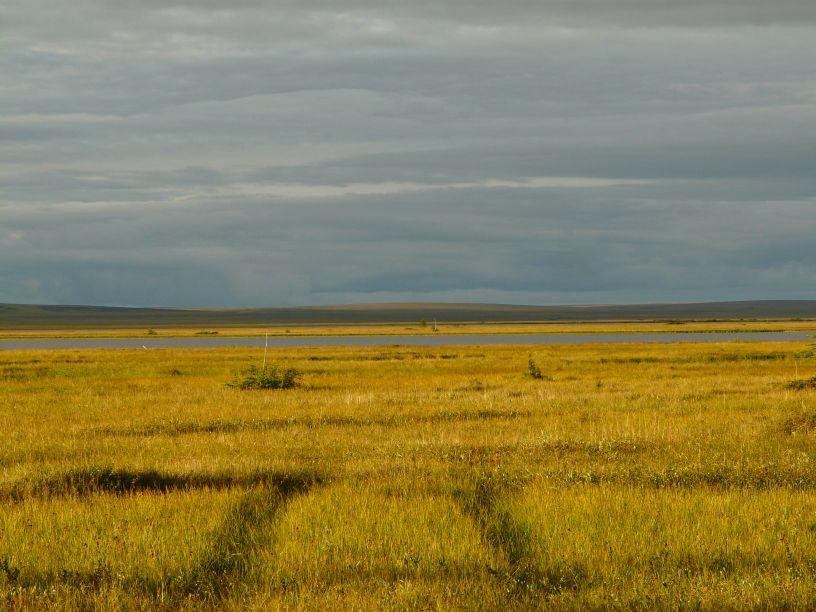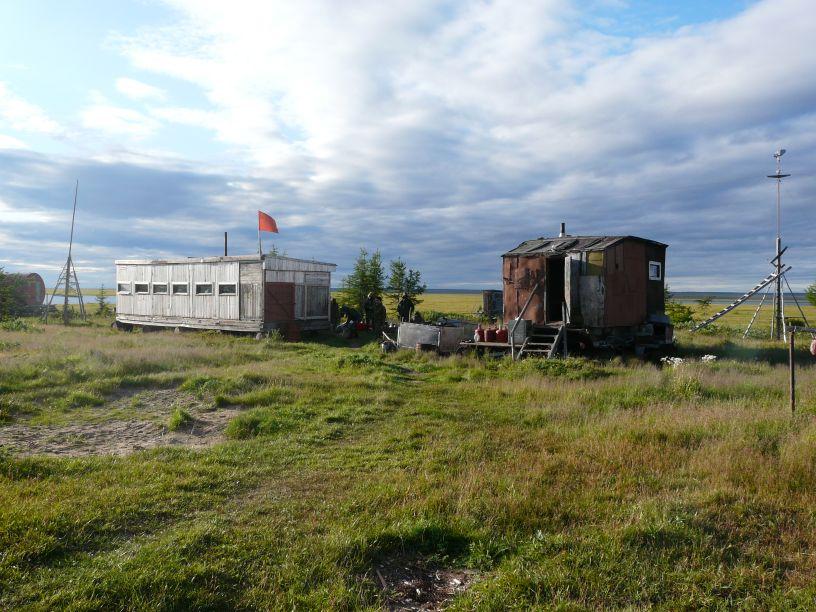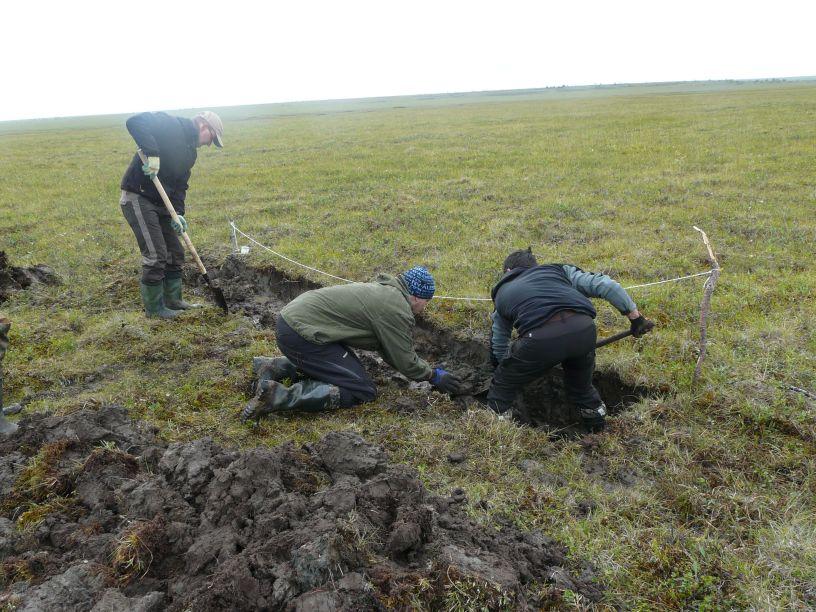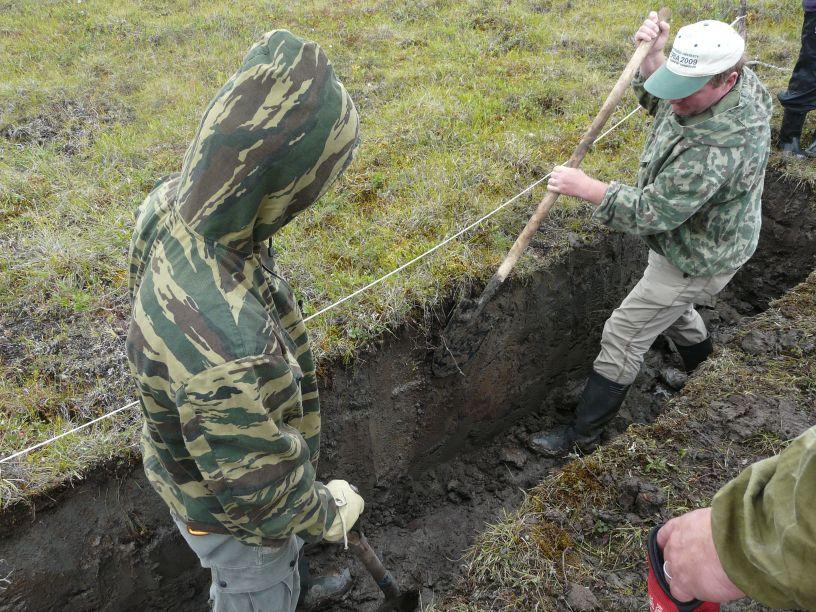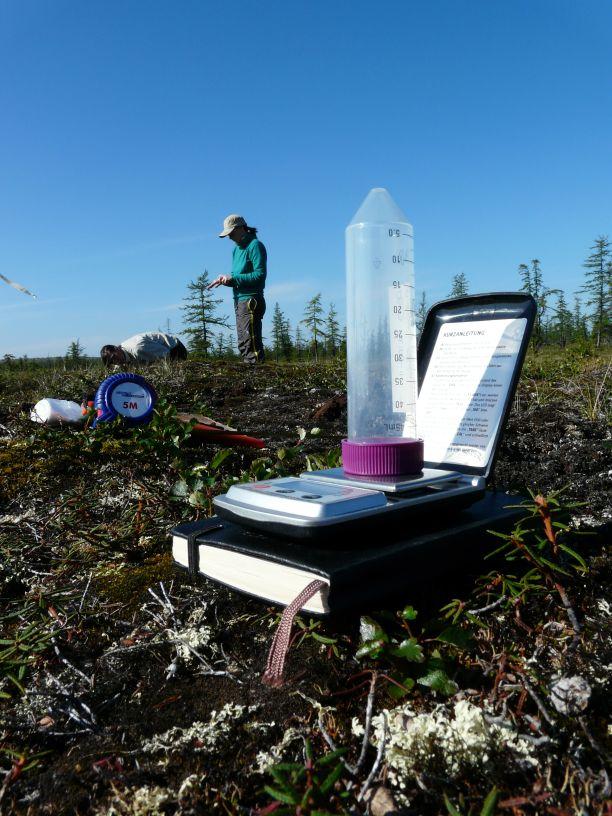Sampling in the Siberian tundra
Summer 2011 Antje Gittel took part in a sampling campaign on the Taymyr Peninsula in Northern Russia.

Main content
By Antje Gittel
Gittel, a researcher from the Centre of Geobiology and the Department of Biology at the University of Bergen, says that the field experience was quite different from "everyday life"! For a total of 16 days in the field they needed an extra 5 days just for travel to reach the remote area.
(Click on the thumbnail pictures to access larger versions.)
Gittel explains that the campaign was made possible through a collaboration with the Forest Institute in Krasnoyarsk, a city in Siberia (56 degrees N). Such collaborations with Russian partners is important as there is a heavy administrative process involved in conducting research in both Russian and in remote areas. From Krasnoyarsk they had a 6 hours-fligh,t with a stone-age Antonov-26, to the last civilized town in the North, which is called Chatanga (over 71 degrees N). From Chatanga the researchers were flown by helicopter in and out to the field station. They then took boats from the field station every day to reach the sampling site.
Gittel is a member of the multinational CryoCARB project, which is collaboration between 6 European countries and Russia (www.univie.ac.at/cryocarb/). This consortium of scientists applies an interdisciplinary approach to advance organic carbon estimates for cryoturbated soils in the Eurasian Arctic and understand the present stabilization mechanisms and the vulnerability of Arctic carbon stocks in a future climate.
Around 1700 giga tonnes (Gt) carbon are stored in the Northern latitude permafrost regions (Schuur et al, BioScience 2008), This is more than double the size of the atmospheric carbon pool – but this estimate is still quite uncertain and the amount might even be higher. It is however estimated that 25% of this large carbon pool found in the Arctic soils will be lost by the end of the 21st century and that it will be released to the atmosphere as CO2 (Gruber et al., 2004).
The major mechanism for carbon storage in the Arctic is assumed to involve the subduction of organic-rich material from the surface to deeper layers caused by repeated freezing and thawing cycles (cryoturbations) in the active surface layer during Arctic summer. These cryoturbations occur over enormous land areas in the Arctic and store high amounts of soil organic carbon (SOC). However, decomposition processes in them occur slowly; they therefore essentially remove this fraction of the SOC from the current carbon cycle.
In the work this summer, more than 200 soil samples were taken from different locations on the Taymyr Peninsula. These were fixed to preserve nucleic acids for molecular analyses and brought back to the laboratories at the Universities of Bergen and Vienna. Molecular analyses will target the diversity and abundancies of Bacteria, Archaea and Fungi in the samples and will also be used in metagenomic and metatranscriptomic studies. The researchers will thus be able to form a comprehensive picture of the microbial communities in these soils, their functional potential as well as the functions they are currently expressing. They also hope to determine differences in population composition and activity between the organic topsoil, the mineral subsoil and the cryoturbated horizons.
Findings from this sampling will be compared to other geographic regions in Siberia (e.g., Cherskii in the Northeast and Vorkuta in the Northwest), as well as those in Greenland and Svalbard. The results will also be correlated with respect to process rates and gas fluxes. Such a comparison will enable researchers to address overall issues concerning the mechanisms of carbon sequestration and SOC vulnerability in the Arctic.
